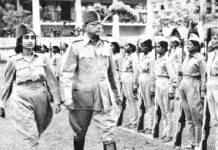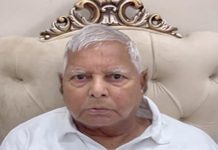IT IS not just the successive state governments that the ordinary Kashmiri feels most betrayed by. They nurture a deep grouse against New Delhi for looking at the border state as a piece of real estate, the crown on India’s head that must be held at all cost. If they feel that the Centre has reacted only by flying in more and more troops, it is because the one policy that has marked its approach is that of containment. All governments have preferred the military option over a political solution. Over the last 20 years, various prime ministers have only made tall promises of granting maximum autonomy to the beleaguered state. Remember PV Narasimha Rao’s words – the sky is the limit; and Deve Gowda’s promise of ‘anything short of azadi’?
Apart from one feeble attempt during the NDA regime when the then home secretary Kamal Pande flew to Srinagar to begin a dialogue with the Hizbul Mujahideen, most political endeavours have revolved around aborted round table discussion with the Hurriyat Conference. In the 20th year since the insurgency began, Home Minister P Chidambaram is once again in secret parleys with the separatists. Will New Delhi ever muster the courage to move away from ‘containment’ and look at autonomy as a serious solution? The NDA did not because of the BJP’s own stand on scrapping Article 370, which vests Kashmir with special powers, and the UPA will not because it does not want to gift the BJP an emotive issue.
In two decades, various governments have also ignored advice coming out of the army headquarters in South Block and the BSF headquarters in Lodhi Estate. When battle-fatigued soldiers started committing suicide and shooting their own officers, the generals woke up to a simple fact – the solution to Kashmir would not come from military might. Ask army commanders, perplexed by the numbers of jawans killing themselves and their officers, and they will tell you that in Kashmir they are at best tolerated and at worst seen as an occupational force. Indeed, in an ironical twist, the army was forced to recruit 400 psychiatrists after 100 jawans and soldiers killed themselves in a little over a year. Internal introspections have centered on the lack of motivational leadership amongst officers. Several suicides have coincided with jawans not being able to get leave when they want to and prolonged separation from families wherein they have to serve in a hostile zone. The men in olive have got looped in the same vicious cycle of violence as the population they have been tasked to protect.
If there is one urgent message the Centre needs to wake up to, it is this – the surface normalcy is a dangerous smokescreen. The Amarnath Yatra crisis that brought the state – both Jammu and Srinagar – to a boil was symptomatic of various faultlines. The graph of militant violence is down, yes, and so are the numbers of trained militants being infiltrated from across the border, but Kashmir is capable of slipping from the precarious precipice on which it is perched at a moment’s notice. In other words, the alienation that runs so deep, awaits political balm from New Delhi. So do the Pandits, who continue to languish in migrant camps nearly 20 years after they were forced to flee in the dead of night. Last year, when the state burned across both sides of the Pir Panjal, the question that stood out was this: When peaceful protests fail, what next? The same question still remains.
The deep psychological siege is claiming new recruits every day. Ask Dr Surrayah Qadeem, a young doctor who has turned to counselling patients after losing her own brother. Her patients today come from Shopian where Asiya Jan and her sister-in-law Nilofar were allegedly raped and killed. Says Qadeem, “One of the girls used to sit on the same bench as Asiya in school. She now has a constant dream in which Asiya is telling her that she too will be killed like she was killed. Another young girl from Shopian has dropped out of school because she has to cross an army camp to reach there and is too scared of doing that.”
Shopian is only the latest address in Kashmir’s long history of violence. It most certainly is not the last. And yes, mothers are no longer putting mehendi on the hands of their sons and sending them to Pakistan. They have rejected violence as the vehicle for greater autonomy. It is ‘India’ that they are looking to. Will somebody in New Delhi’s power corridor please stand up and listen to these prisoners of a long war.
WRITER’S EMAIL
shammy@tehelka.com











